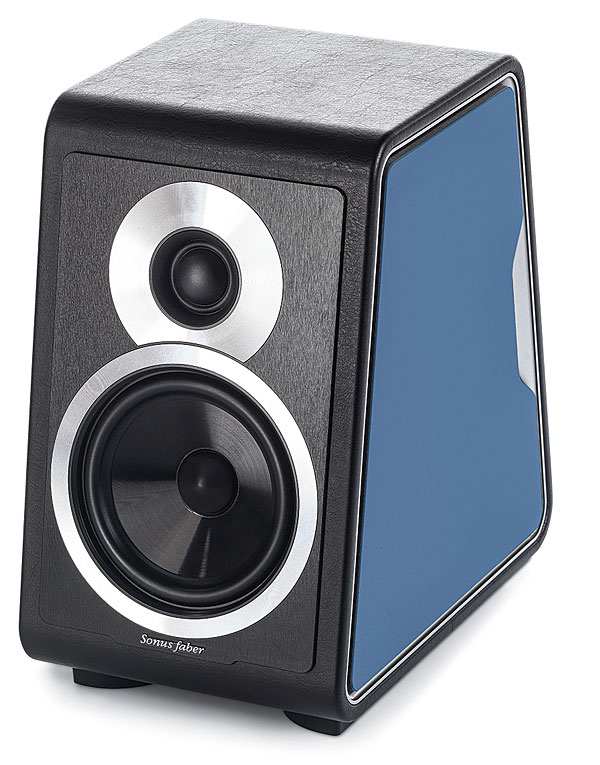Sonus Faber Chameleon T Speaker System Review Page 2
Keith Richards’ 1992 solo effort, Main Offender, is that rara avis, a mainstream pop recording with the sonics and dynamics of an audiophile disc. Its grit-free bite on guitars, in-the-room conviction of vocals, and—especially—you-are-there power and impact on drums (played by studio stalwart Steve Jordan) are truly exceptional. (Why can’t every studio record sound like this, instead of the homogenized mush we so often get? It makes me mad!) And the Chameleon Ts did Keef full justice, even at the considerable levels I imagine the skull-wearing one would approve of. A kick drum, a snare (with the snares off), a Keith riff or two—what more does any reasonable soul require?

A track like the reggae-esque “Words of Wonder” demonstrates the recording best. It’s unexpectedly clean and impressively dynamic, though still with some over- driven hair and nasally EQ on many of the vocals (possibly a legacy of a singer/producer who even after so many years remains ambivalent about his own voice). The Chameleon Ts’ repro seemed just about ideal: lots of squeaky-clean impact even at chest-thumping levels, without so much as a hint of squished or edge-smoothed tonality that might herald dynamic compression. Nice! The Ts produced more level than I’d ever desire from my 150-watt-per-channel amplifier, and a trial with a midrange receiver sounded just about as good, suggesting a manageable amplifier load.
Sonus Faber’s towers had full output to 40 hertz or so, and very little emphasis in the critical octave above that point, which made for tight, lifelike sounds from well-recorded jazz and rock bass. The Ts seemed perfectly capable for most music, and I had no trouble integrating my sub to supply the bottommost octave, crossing over the SVS behemoth at 60 Hz. The difference in terms of in-room cohesion was minuscule, but long-term with these towers I’d probably still save a preamp or AVR preset set up for full-range two-channel mode for listening to most stereo music.
The Chameleon C center proved a very good match to the Ts, with one reservation. On most female announcers and higher-register male voices, direct comparisons of mono (Chameleon C alone) against stereo (the pair of Ts) were very close—in some cases, almost indistinguishable. But on lower male voices (typical of most news readers and voiceover artists), the C showed a distinct loss of bass fullness in the lowest vocal octave; a difference that was quite obvious. I found that crossing over the center channel to the Ts at 60 Hz, rather than either higher or not at all (that is, running the C full-range), improved matters substantially, but the difference was still clearly there.
However, that’s only in the worst-case comparison of “naked” male announcers. While doing normal listening in the usual mult channel modes, I never noticed any shortcomings on voices or music, and the Chameleon C demonstrated very fine off-axis balance. I heard next to no hollowness or “honk” at up to 45 degrees to the left, and just a mild amount of the former to the right (and then only at pretty extreme angles). The difference arises from the center’s left-hand woofer being the sole active bass driver; the right is the passive radiator, so the C’s mid-frequency dispersion is slightly asymmetrical. Consequently, the speaker’s acoustical origin is at the left woofer; to put the center channel truly in the center, you need to offset it visually a foot or so to the right, which is bound to upset someone’s aesthetic sense. That said, if you sit more than 8 or 9 feet away, it’s unlikely to make much odds either way.

The Chameleon Bs assigned to my surround positions made a near- perfect timbral match to the towers. (I checked them in a side-by-side A/B comparison.) And these are very capable little speakers themselves, perfectly ready to deliver high levels and to absorb 100 watts or more of clean power. (In fact, for a subwoofer-assisted setup, I might just prefer a quad of Bs, placing the sub for best low-end integration.) In their surround duty, the bookshelf Chameleons performed admirably. The 5.1 layout delivered finely integrated sound on a wide range of film and TV programming even on so stern a test as the latest special edition of Gravity. This was an interesting demo, since the radio voices of Sandra Bullock and George Clooney occasionally move off screen, to channels other than the center. Tonal consistency remained very good, although I did notice the timbre shift when, early in chapter 2, Bullock’s voice moves hard to the left front channel, where it gained fullness. Even without subwoofer support, the Sonus Faber layout had enough low-end grunt for satisfying movie playback. That said, those listeners who demand a genuine big-cinema wow-factor will want a true sub with some real 20-to-40-Hz authority.
La Linea di Fondo
There’s no question that the Chameleon T, B, and C are excellent reproducers. Indeed,
they are sonic standouts, solidly price-competitive in their crowded field—and for those turned on by their different-but-elegant looks, perhaps a bit more so. Question is, do you need a subwoofer? If you absolutely demand last-octave realism from the occasional asteroid or nuke (but how many real-
world asteroid strikes or nuclear detonations have you actually experienced?) or the full Zarathustra Monty, then yes, you need a sub, which could add as much as a grand or so to the system price. (Sonus Faber USA will have a model or two soon, possibly by the time you read this.) Even in that case, the Chameleons demand a listen, and a look. Anyway, who else can sell you orange towers?





























































